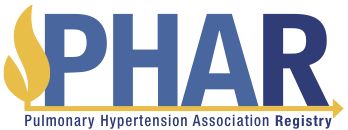| Title | Clinical Differences and Outcomes between Methamphetamine-Associated and Idiopathic Pulmonary Arterial Hypertension in the PHAR. |
| Publication Type | Journal Article |
| Year of Publication | 2020 |
| Authors | Kolaitis, NA, Zamanian, RT, Perez, VA de Jesus, Badesch, DB, Benza, RL, Burger, CD, Chakinala, MM, Elwing, JM, Feldman, J, Lammi, MR, Mathai, SC, McConnell, JW, Presberg, KW, Robinson, JC, Sager, J, Shlobin, OA, Simon, MA, Kawut, SM, Glidden, DV, Singer, JP, De Marco, T |
| Corporate/Institutional Authors | Pulmonary Hypertension Association Registry Investigators |
| Journal | Ann Am Thorac Soc |
| Date Published | 2020 Oct 16 |
| ISSN | 2325-6621 |
| Abstract | <p><b>RATIONALE: </b>Single-center studies demonstrated that methamphetamine use is associated with pulmonary arterial hypertension (Meth-APAH). We used the Pulmonary Hypertension Association Registry to evaluate the national distribution of Meth-APAH, and to compare its impact on patient-reported and clinical outcomes relative to idiopathic PAH.</p><p><b>OBJECTIVES: </b>To determine if patients with Meth-APAH differ from those with idiopathic PAH in demographics, regional distribution in the US, hemodynamics, health-related quality of life, PAH-specific treatment, and health care utilization.</p><p><b>METHODS: </b>The Pulmonary Hypertension Association Registry is a US-based prospective cohort of patients new to care at a Pulmonary Hypertension Care Center. The registry collects baseline demographics, clinical parameters, and repeated measures of health-related quality of life, World Health Organization functional class, six-minute walk distance, therapy, and health care utilization. Repeated measures of functional class, health-related quality of life, type of therapy, emergency department visits, and hospitalizations were compared using generalized estimating equations.</p><p><b>RESULTS: </b>Of 541 participants included, 118 had Meth-APAH; 83% of Meth-APAH arose in the Western US. The Meth-APAH group was younger, had a poorer socioeconomic status, and lower cardiac index than the idiopathic PAH group, despite no difference in mean pulmonary artery pressure or pulmonary vascular resistance. The Meth-APAH group had a more advanced functional class in longitudinal models (0.22 points greater, 95%CI: 0.07 to 0.37), and worse PAH-specific (emPHasis-10) health-related quality of life (-5.4, 95%CI: -8.1 to -2.8). There was no difference in dual combination therapy, however, participants with Meth-APAH were less likely to be initiated on triple therapy (OR: 0.43, 95%CI 0.24 to 0.77) or parenteral therapy (OR: 0.10, 95%CI 0.04 to 0.24). Participants with Meth-APAH were more likely to seek care in the emergency department (IRR: 2.30, 95%CI 1.71 to 3.11) and more likely to be hospitalized (IRR: 1.42, 95%CI 1.10 to 1.83).</p><p><b>CONCLUSIONS: </b>Meth-APAH represents a unique clinical phenotype of PAH, most common in the Western US. It accounts for a notable proportion of PAH in expert centers. Assessment for methamphetamine use is necessary in patients with PAH.</p> |
| DOI | 10.1513/AnnalsATS.202007-774OC |
| Alternate Journal | Ann Am Thorac Soc |
| PubMed ID | 33064950 |
| Grant List | K24 HL103844 / HL / NHLBI NIH HHS / United States |
